
A new book titled, CATCH THE COOKIE has hit the bookshelves written by Hallie Durand, a.k.a. Agent Holly McGhee and illustrated by David Small. I have the book and can truthfully say it is a very fun picture book. I scanned in a few interior shots and Holly sent a picture of the real Marshall to add to the interview questions. I also added a quick blurb to whet your appetite:
Marshall knows one thing for sure, despite what all the stories say: Gingerbread men cannot run. Cookies are for eating, and he can’t wait to eat his after spending all morning baking them with his class. But when it’s time to take the gingerbread men out of the oven . . . they’re gone! Now, to find those rogue cookies, Marshall and his class have to solve a series of rhyming clues. And Marshall just might have to rethink his stance on magic. Catch That Cookie! is an imaginative mystery, deliciously illustrated by Caldecott Medal winner David Small. It’s sure to inspire a new classroom tradition . . . and maybe even a few new believers!
I wanted to know more about the book and Holly, so below is the interview I had with her. If you want to read more about David Small and read about the process of creating the book cover for CATCH THE COOKIE, he was featured this past Saturday on Illustrator Saturday - definitely worth reading. Here’s Hallie/Holly:
Most people know you as Holly McGhee. Why did you decide to write under another name?
A: On that first submission especially, I needed to know whether my writing could speak for itself, in no way connected to me as an agent—could I get published just because an editor and publisher believed in my work? I’ve kept with a pen name to separate my writing from agenting, though at this point it’s not a secret that I’m Holly McGhee & Hallie Durand.
When did you start writing your latest book, Catch That Cookie!?
A: I started Catch That Cookie! in earnest over the Christmas holidays of 2011. My son Marshall had been a preschool student of Mrs. Gray’s (the teacher in my book) in the fall of 2009, and he had gone on a gingerbread hunt at school. He’d come home with a recipe for gingerbread men, and he was obsessed with making the cookies. He kept nagging me, and so I finally borrowed the cookie cutters from Mrs. Gray and we made them for our class picnic in June of 2010, in ninety-degree heat. We put them in the van to bring to the picnic, and then Marshall started locking the van doors. I realized he thought the cookies would escape, ha ha ha ha! I knew there was a story there, and I wanted to know what Mrs. Gray had done in class to make Marshall believe those G-men could escape. So I interviewed Mrs. Gray and that inspired my picture book.

How did it find a home at Dial?
A: When I finally had a draft that I liked, I shared it with my agent, Elena Giovinazzo, who sent it out to editors. Lauri Hornik and Kate Harrison at Dial made an offer.
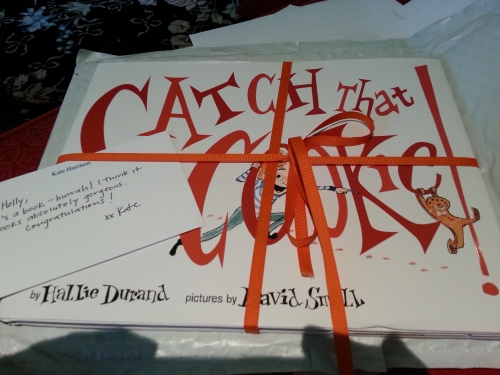
Were you the one who chose David Small to illustrate the book?
A: No, that was my editor, Kate Harrison, and the art director Lily Malcom. I couldn’t be happier about the choice—not only is David my client but he is one of my very close friends. (I was nervous he would turn it down though, and thrilled that he liked it—he’s picky!)

How long did it take David to do the illustrations?
A: He started early in 2013 and finished that fall. I sent him a picture of Mrs. Gray to inspire him and also pictures of Marshall, Avery, and Henry, who all appear in the book (they were Marshall’s classmates).
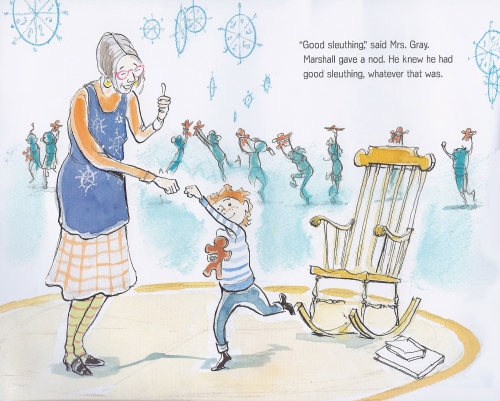
Do you plan any book signings or other marketing things now that the book is sold?
A: Yes, David and I are doing a little mini tour to celebrate both the book and our friendship. I am going out to Kalamazoo, Michigan on September 10 and we are doing one appearance for adults at the Kalamazoo Library and one for kids at the Book Bug, and then he’s coming back with me to Maplewood, NJ. We’ll have a big gingerbread hunt with Mrs. Gray at the Maplewood Library on September 13, and an event for writers and artists (together with Anna Kang and Chris Weyant of You Are (Not) Small and Richard Morris of This Is a Moose) on the 14th. We’re going to talk about collaboration. Then we’ll have an appearance at our local bookstore on the 15th as well as a private event for the preschool four year olds (all at Words, Maplewood). David will share some of his drawing secrets. I’ll have more details for you soon.
When did you write your first book and what was the title?
A: In 2007 I wrote my first chapter book / novel, Dessert First, and I wrote two more books in that series. Dessert First was published in 2009, Just Desserts in 2010, and No Room for Dessert in 2011, all illustrated by the amazing French artist Christine Davenier.
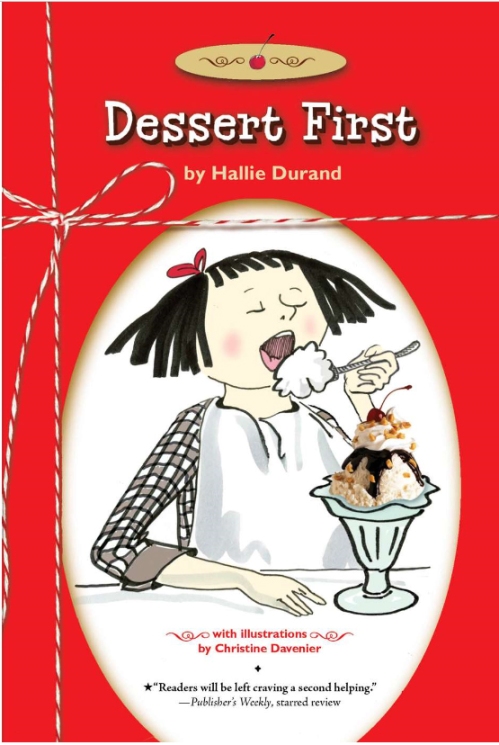
Were you an editor at that time?
A: Nope, I had been an agent for nine years already (though I’ve never stopped being an editor really—as an agent I’m often the first set of eyes on a manuscript, helping polish it enough to be acquired).
How did the idea come to you?
A: It started at a dinner with one of my best friends at the River Run Café in NYC. We ordered dessert to share, and as always I angled the plate so that the best part of the dessert “happened” to be directly in front of me. My friend had had enough of my bad behavior and she said, “WHY DO YOU ALWAYS TAKE THE BEST PART OF THE DESSERT?” And I, with nowhere to hide, said, “Because I thought I was getting away with it.” That honesty marked a turning point in our friendship. A few years later, we were sharing a slice of Iced Lemon Cake at lunch, reminiscing about our fateful evening at the River Run. And that very evening, on NJ Transit, Dessert Schneider barged into my life and wouldn’t be quiet till I wrote her story. I’d never experienced anything like that—she was really bossy!
How did that book get published?
A: It was multiply submitted, under my pen name, and was acquired in a two-book deal.
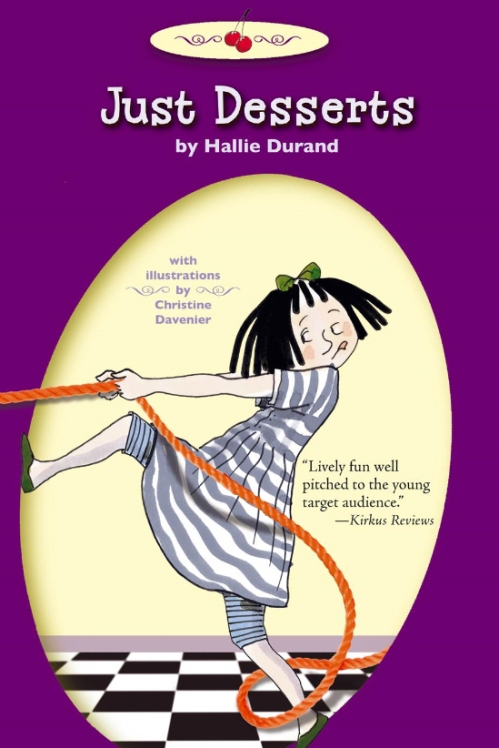
It looks like most of your books have a food element. Is that because you like to bake?
A: Funny you bring this up, because it hasn’t been intentional. Food has been a continuing thread throughout my life, and as a kid I always went grocery shopping with my dad (we still like to go together when we can); we like to see what new products there are on the shelves and what’s on sale. I was the New York State 4-H Bread champion (not kidding!) as a seventeen year old—baking bread was something to do in an otherwise pretty boring summer in farm country, so I went for it, baking bread every day for the entire two months that school was out. Cooking and baking are relaxing for me like nothing else, and when I’m not writing, I’m usually in the kitchen. I even like chopping leeks, just as thin as I can get them without slicing off my thumb in the process . . .
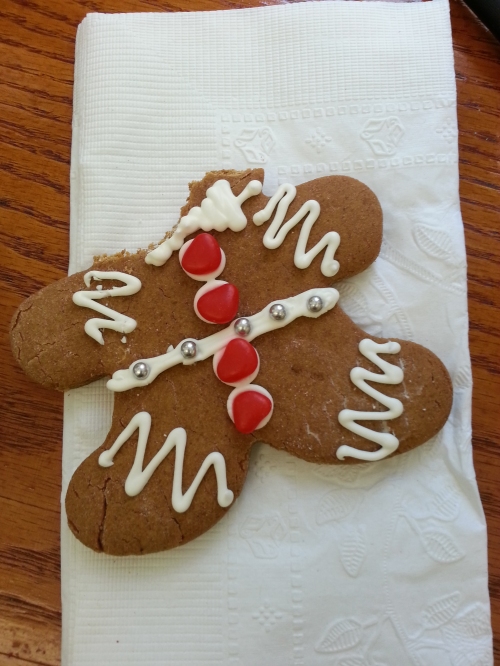
Do you feel that writing your own books helps you relate better with your writer clients?
A: I think my writers and artists appreciate that I understand what they’re thinking and how they’re feeling in a way that you only know if you are a writer or artist yourself. We talk . . . a lot.
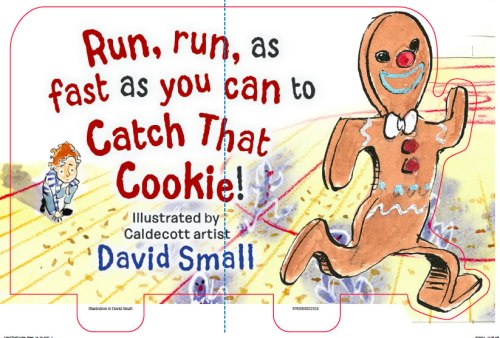
When I heard David Small and Kate DiCamillo speak at SCBWI conferences, it sounded like you were not only a great agent, but a great critique partner for them.
Over the years, there’s a trust that builds, and with David and Kate and most of my clients, I’m a gatekeeper; they can share work with me before anybody else sees it, and they know that if I’m willing to share it with the world, I believe in it.
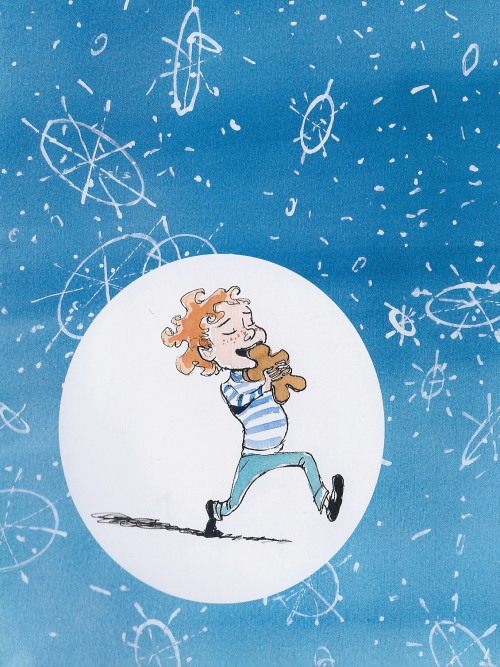
Why did you decide to leave HarperCollins to open a literary agency?
A: I’d been an executive editor for six years, and I had developed my own taste in books. I’d begun to believe that if I loved reading a book, maybe somebody else in the world would too. And so I was ready to set out of my own after a time, especially when some of the projects I tried to acquire were rejected by an acquisitions board. I wanted to succeed or fail based on my own taste.
What was your biggest success as a literary agent?
A: Biggest successes can run the gamut. There are the seven-figure deals with film rights and foreign licenses sold simultaneously, and there are the original books by new authors that become franchises, with television and live-stage deals coming along the way. But there are also the smaller deals that come with huge personal satisfaction, such as bringing a beloved book back into print decades after first publication, or placing that book I’ve always believed in, months after first submission. I think the biggest fun is finding an editor who loves a book, acquires it, and publishes it well, whether it’s snapped up in a pre-empt an hour after submission or acquired after months of waiting. They all matter.
On top of that, the feeling of comraderie I have with my colleagues is one I cherish–we root for each other and have a fabulous time together. That matters too.
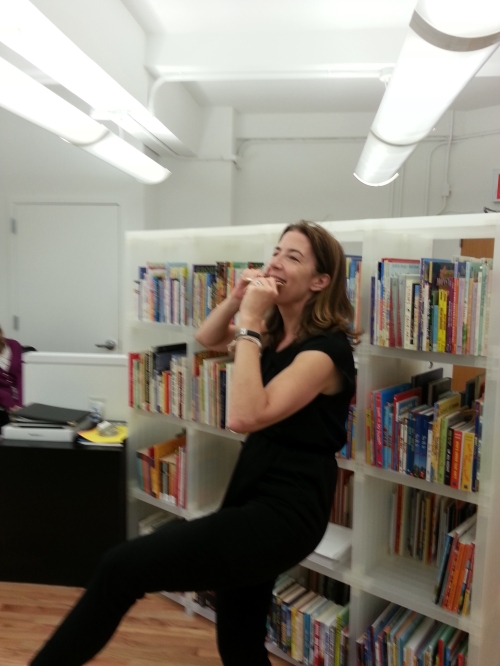
Do you have any words of wisdom for writers from an author’s point–of-view?
~Be discerning but don’t be precious about your work.
~Take your work as far as you can on your own before showing it; your agent only gets a first read once.
~Let your work speak for itself—no need to tell your agent how much your neighbors and other writer friends love it first; that can set unrealistic expectations before that first read.
~Go to your laptop or drawing board every day. It’s easier to stay with the story you’re trying to write or illustrate than it is to reintroduce yourself after an absence.
~Think about a problem you are having with your book right before you go to sleep, and keep a pencil and notepad by your bedside table; you might get an answer during the night or first thing in the morning (it happens!).
~Don’t worry about how many books you have published / are publishing; Robert McCloskey did seven in his lifetime.
~Don’t get obsessed with Amazon rankings, etc. The secret is that a bad ranking will make you feel worse and a good ranking or review won’t make you feel much better.
~As long as you can say to yourself, when you’re looking back at your work, I did the best I was capable of at that time in my life, you’ll be a bit more impervious to negative comments. But make sure you can say that before your book goes out into the world.
Would you answer differently with your agent’s hat on?
A: No, but some of these things I only know from being a writer, inside information J.
Holly, thanks for answering the interview questions. I will remind people when they might be able to see you in September. It was such great fun to share the picture of your son with everyone. It looks like David really captured his looks and personality.
Best of Luck with the book!
Talk tomorrow,
Kathy
PS: Remember to check back next Friday to read the four first pages critiqued by Holly.
Filed under:
Advice,
Agent,
Book Tour,
Editor & Agent Info,
Interview,
Picture Book Tagged:
Agent Holly McGhee,
Author Hallie Durand,
Catch the Cookie,
Illustrator David Small 

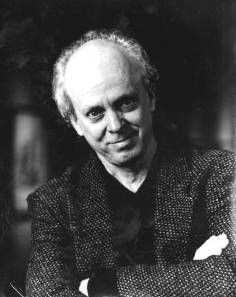 I noticed that illustrator David Small’s new book, Catch That Cookie was hitting the bookshelves on August 14th, so I contacted him to see if he would like to be featured on Illustrator Saturday. He will be doing a book tour in September, so I’ll make sure I tell you all the ins and outs as soon as I know them. It will be a great opportunity to meet him and Hallie Durand, if they are coming to a bookstore near you.
I noticed that illustrator David Small’s new book, Catch That Cookie was hitting the bookshelves on August 14th, so I contacted him to see if he would like to be featured on Illustrator Saturday. He will be doing a book tour in September, so I’ll make sure I tell you all the ins and outs as soon as I know them. It will be a great opportunity to meet him and Hallie Durand, if they are coming to a bookstore near you.
Here is a little bit about David:
David Small was born and raised in Detroit. In school he became known as “the kid who could draw good,” but David never considered a career in art because it was so easy for him. At 21, after many years of writing plays, David took the advice of a friend who informed him that the doodles he made on the telephone pad were better than anything he had ever written. He switched his major to Art and never looked back. After getting his MFA at the Yale Graduate School of Art, David taught art for many years on the college level, ran a film series and made satirical sketches for campus newspapers.
Approaching tenure, he wrote and illustrated a picture book, “Eulalie and the Hopping Head”, which he took to New York, pounding the pavements and collecting rejections for a month in the dead of winter. “Eulalie” was published in 1981. Although tenure at the college did not follow, many more picture books did, as well as extensive work for national magazines and newspapers. His drawings appeared regularly in The New Yorker and The New York Times. A learn-as-you-go illustrator, David’s books have been translated into several languages, made into animated films and musicals, and have won many of the top awards accorded to illustration, including the 1997 Caldecott Honor and The Christopher Medal for “The Gardener” written by his wife, Sarah Stewart, and the 2001 Caldecott Medal for “So, You Want To Be President?” by Judith St. George.
“At the Caldecott ceremony in San Francisco,” said David, “facing that veritable sea of smiling faces — of librarians, of friends in publishing, of my family and other well-wishers— I was so overcome that I lost my voice and croaked my way through the speech. Having been turned from a frog into a prince by the American Library Association, before their eyes that night, I turned back into a frog.” To date he has illustrated over 40 picture books. At an average of 40 pages per book, that makes around 1,840 illustrations, though someone ought to check that math. Currently David is working on a graphic memoir about his problematic youth.
David Small and Sarah Stewart make their home in an 1833 manor house on a bend of the St. Joseph River in southwest Michigan. David’s studio is an 1890 farmhouse also overlooking the river, just a short walk from home.
Here’s David discussing his process for the cover of his new book, CATCH THAT COOKIE written by Hallie Durand:
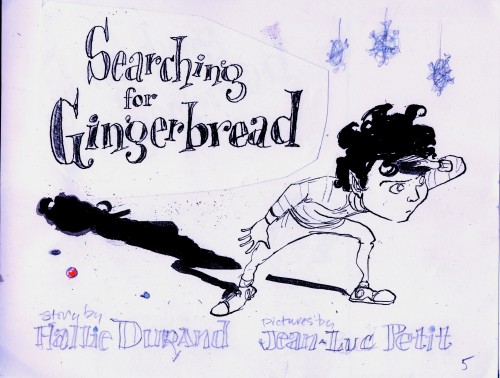
Every picture-book has its unique set of problems in the making of it. This one had relatively few worries on the interior art but, what we didn’t know was: we had a long hard struggle coming up, trying to find a good title and a good jacket design as well. This was a first jacket sketch, from back in the summer of 2013, when the working title was “Searching for Gingerbread”, which nobody liked.

By December, Holly had come up with a great title. I still clung to that original pose for the Kid but, as you can see from my inked notations, we were already discussing a different attitude, one without the theatrical “Scout-Searching-the-Plains” hand over the eyes.

Here the Kid’s pose is more dynamic, but still something was wrong. Nobody thought the Kid should be able to see the Cookie. They were right: it made it look like an uneven match.
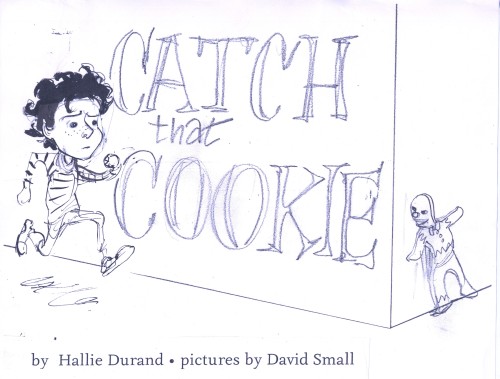
Here their positions are reversed. The hiding cookie seemed okay, but the Kid has no verve. The thrill was going out of this jacket project. By now, six months had passed. It was February 2014, I was working from my studio in Mexico, and our deadline for a jacket was coming up very soon. We decided to get the creative juices kick-started by taking a radically-different approach. (We had no idea what that approach would be, only that it had to be radical. [Slide #4a:] Lily (the Art Director) and I decided to comb over some old movie posters for dynamic image ideas. Here is Mark Wahlberg as “Max Payne.”
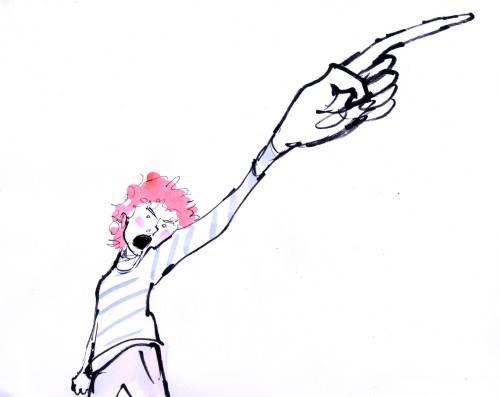
…. and here is the Kid saying: “Stop right there, you darn cookie! Put your doughy little arms up or suffer maximum pain!”
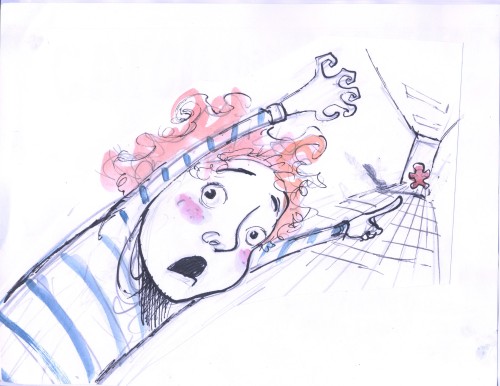
Another wrong direction. The illustrator’s panic shows in the whole pose. I and Lily, Holly and two editors– were working every day, all day and often into the night on this. We had passed the deadline long ago and were nearing the drop-deadline. We had to find another way!

Some smart-thinking person (not me,) had come up with this “WANTED” poster for the back jacket. Another person (also not me,) decided it might work as the front jacket.

For several days we went with that, but nobody was getting buzzed. This one had too much text to read …
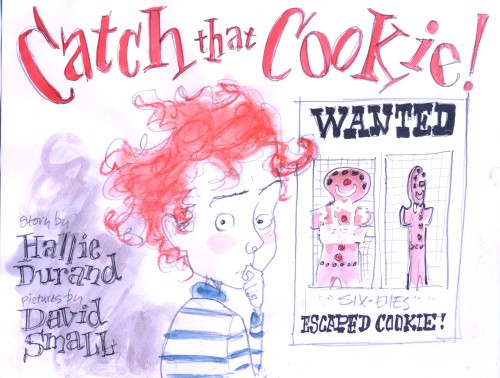
…this had less text but still no “Grab-Me-Off-The-Shelf” appeal.
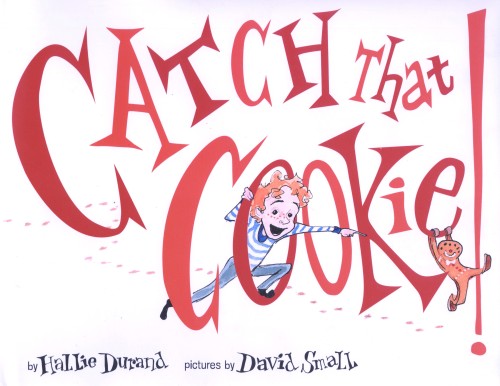
How this– the final jacket design–evolved, was a similar ordeal full of false starts, wrong turns, bad decisions, do-overs and raw nerves but we finally got it. And that, in the end, is all that matters. I’ve shown you 10 examples here, but in my archives I have at least 50 different comps for this jacket, which doesn’t count all the others that went into the trash. It now seems amazing, unusual — even weird– that it took so long to get this right., but so it goes.
BELOW: DAVID ANSWERS TO THE INTERVIEW QUESTIONS I ASKED:
When did you first know you were destined to become an artist?
When I realized I was not fit for life in the real world and that any normal employment was out of the question.
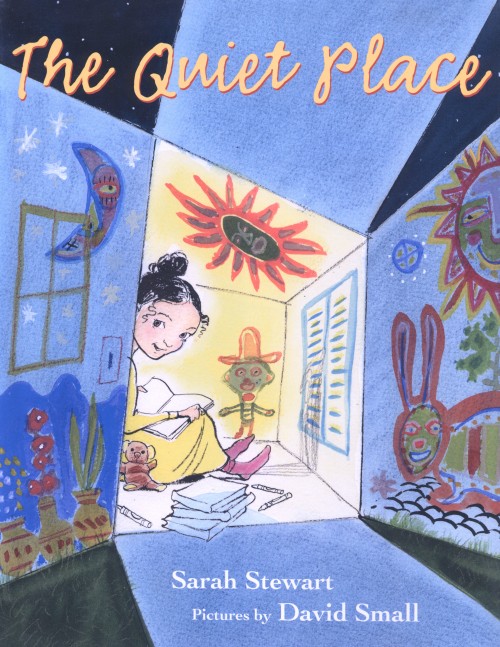
Did you always live in Michigan?
No. I’ve lived in Chicago, in Boston, in New Haven and in a small burg in Upstate New York. Also, you should know that there are two Michigans: one is called Detroit, and I’ve done time in both.
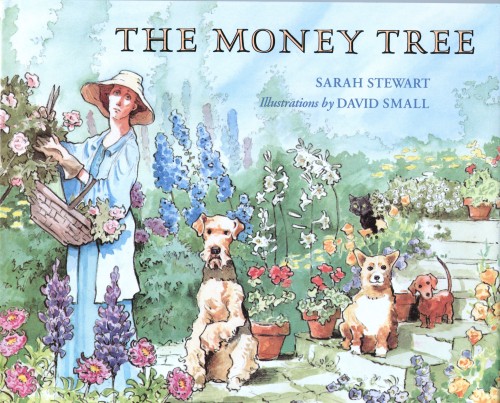
What was the first thing you illustrated and got paid for doing?
An article in the NYTimes Book Review. I was in NYC for 2 months, trying to market my first children’s book. (This was in the early 1980’s, before the Internet, when you had to be in NYC to get work there.) I went up to the Times to the office of Steve Heller, showed him my portfolio, and then and there he gave me an assignment for the Book Review. Since he wanted it the next day, I stayed up all night, working on
the floor of an empty apartment on W. 10th Street. (Some friends had loaned us their apartment while they moved into another one, and the place had no furniture except a bed and a lamp.)
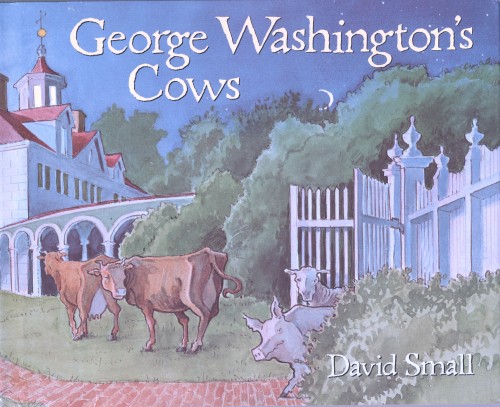
Do you feel getting your MFA at the Yale Graduate School of Art helped develop your style?
No. I had a far better art education getting my BFA at Wayne State University in Detroit, during the ‘60’s.
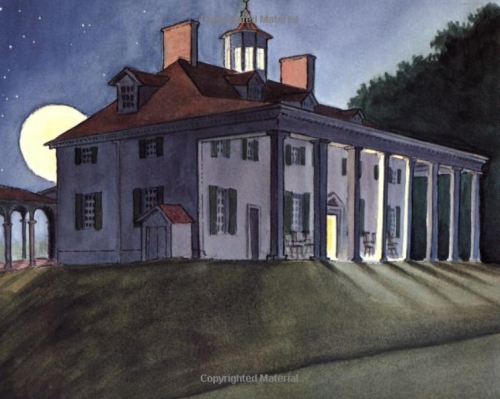
What made you decide to go to Yale vs. other schools for art?
I didn’t make the decision. My mentor– a Boston artist named Michael Mazur–decided I needed to go to grad school. Mike had gone to Yale, was good friends with the printmaker Gabor Peterdi, who at that time taught in the Printmaking Department at Yale, and he used his influence to get me in.
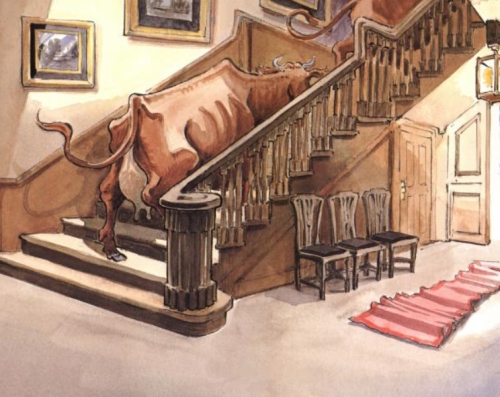
Did you have a favorite class at Yale?
Life Drawing was always my favorite class, wherever I was. At Wayne I had had great instructors in drawing the figure and Anatomy, so by the time I got to Yale all I really needed was to be left alone to continue practicing.
You may sense a certain “distant” tone when I speak about Yale? At the time I was
there, in the early 70’s, the Yale Grad School of Art was a ruptured institution, with one part of the faculty –the Traditionalists–at war with another, the Abstractionists. This tension got passed along to the students, who basically stayed hidden away in their studios, coming out only for the faculty group critiques of their work. These forums were staged in public, in an open pit, with people watching from the balconies tiered around that space. They were like gladitorial games and they always devolved into ideological screaming-matches between the professors, while students were frequently driven away in tears. I got spared these ordeals because we Printmaking majors weren’t considered actual artists.
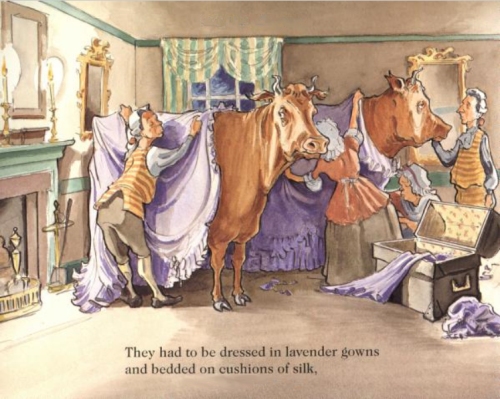
You mention in your bio that you began with writing plays. Do you think you will ever write another play?
Making graphic novels is much like play writing, and it’s even more like film-making.
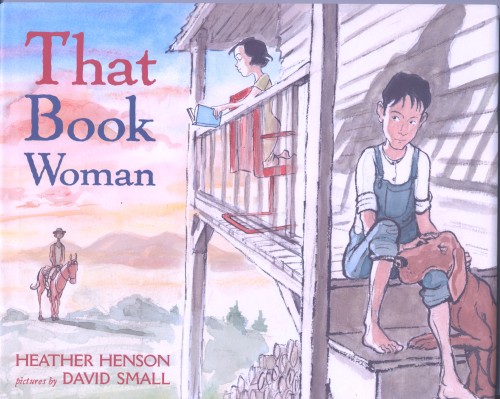
Do you feel getting your MFA at Yale opened doors for you?
Absolutely. In the world of academe, that Yale degree has genuine snob appeal. Out in the world of actual illustration, Art Directors at magazines and publishing houses could care less where you went to school. They don’t read your resume, they just look at your portfolio.
My opinion of art schools in general is they offer you two important things: 1) a place to work where you can avoid having to be out in the world while you develop your art, and, if you’re lucky, 2) possibly one or two good instructors who might encourage you. I still think the portfolio is more important than the degree.
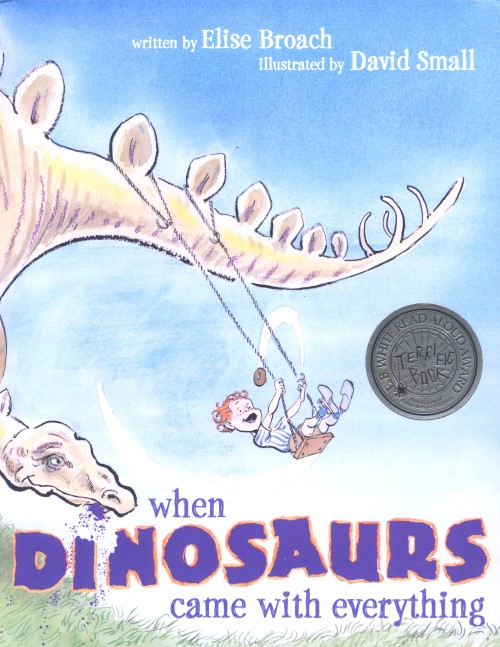
What was the catalyst for your first picture book, “Eulalie and the Hopping Head”?
My family. I grew up feeling my parents wanted to trade me in for a different model.
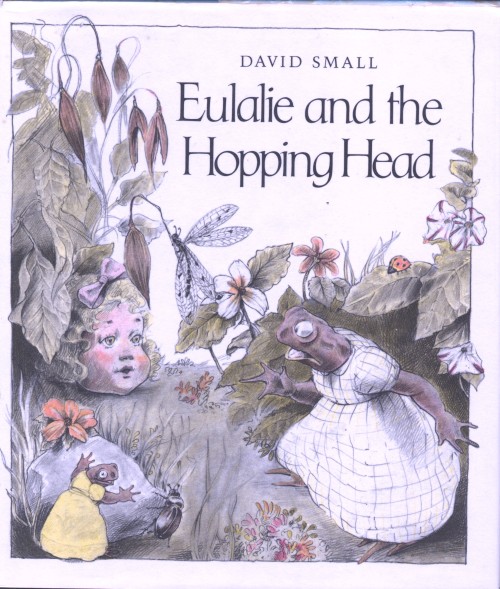
Where did you teach art? How did the job to teach art come along?
I first taught at the S.U.N.Y. college at Fredonia. I presume it was the Yale degree that put me in the running for that position, but also, my work was substantial and I interviewed well. That job lasted 7 years. I left that institution -and tenure — when I was hired at Kalamazoo College ,which had all the qualities I was looking for in a place to teach; it was small, it offered a real quality education, it had that
Georgian architecture ( the look of a little Parnassus-On-A-Hill) and –a big plus–there were very few Art majors. That meant that my students came from other disciplines like the sciences and language, and so, had other interests than flinging paint around.
After 4 years there, the Reagan Recession hit and colleges everywhere began cutting positions to save money. My position was eliminated and my wife and I –both around 40 years old at that time– found ourselves out on the street, with no jobs, no savings and no place to live. At the time it seemed like a disaster, but it turned out to be the best thing that ever happened to me. It pushed me out into the world of work. If I had stayed in academe I think I might have withered away and dried up completely.

How did you land your gigs with The New Yorker and The New York Times?
I showed them my portfolio and, to my surprise, they hired me. Then they hired me again. But there was absolutely no certainty that they would ever hire you after that. This uncertainly–to me– was exhilarating, and stillis. It’s so different from academia, where you could relax and be assured that your next paycheck would be coming in.

Do you still do illustrations for magazines?
No. Maybe things have changed now, but for the years when I worked for magazines, the work was always very interruptive, the pay was low, and it all had to be done very fast. The pace got even crazier with the advent of fax machines, overnight delivery and the Internet.
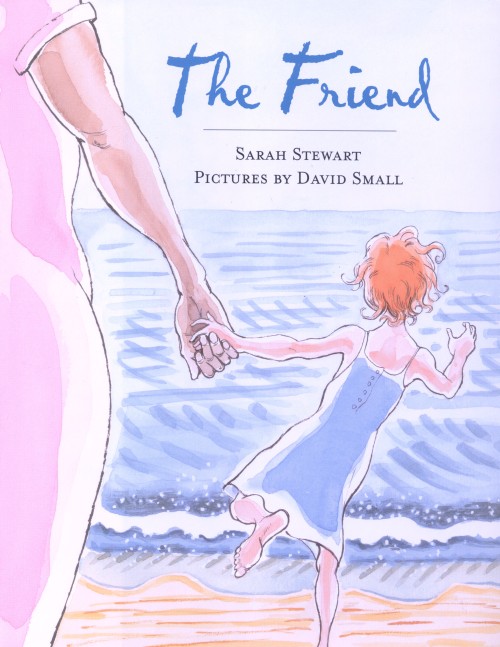
Which books of yours were recreated into animated films and musicals?
IMOGENE’S ANTLERS was made into a great little mini-musical. Weston Woods has made films of SYWTB President?, MY SENATOR AND ME, and– coming soon– ONE COOL FRIEND.

Did your illustrating and your wife’s writing bring the two of you together?
No. A mutual friend introduced us at a party and it was love at first sight. I loved her face, her intellect, and the tiny vase of live violas she wore around her neck that night. We were friends for eight years before we married.
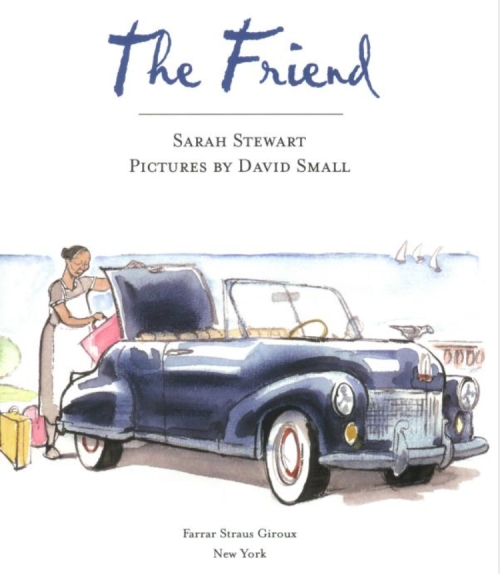
Was it fun working on “The Gardener” that your wife Sarah Stewart wrote?
The word “fun” did not enter my work vocabulary on that project The story ,as you know, is set in the Great Depression, and concerns a child whose family can’t afford to keep her. She is torn away from everything she knows and loves and is sent off to work for her uncle in the city. When I illustrate a story I have to make my own. That is, I have to find myself in it. With The Gardener, at first and for a long time, I agonized over the pain and loneliness that child must have felt. I couldn’t find any light in it. Also, I was familiar with the black and white photos from that era, of the
starving families in the Dust Bowl, of the urban bread lines … It wasn’t pretty. I decided it was beyond my powers to illustrate that story, and I was ready to turn back the contract. Then came a breakthrough.
I had a talk with Lydia Grace Finch–the gardener friend of Sarah’s on whose childhood Sarah had based her story. I asked Lydia what it was like growing up during the Depression.She said: “I was just a kid like any other kid. I didn’t know what ‘the Depression’ was; that was just life. We all had to work, of course.
We worked hard, but we also knew how to enjoy ourselves. I had a lot of fun during the Depression!”
That conversation was an eye-opener for me. I put it together with my own childhood memories of growing up young and innocent in Detroit, and suddenly things began to develop rapidly on paper. I guess, maybe, at that point it started to be fun.
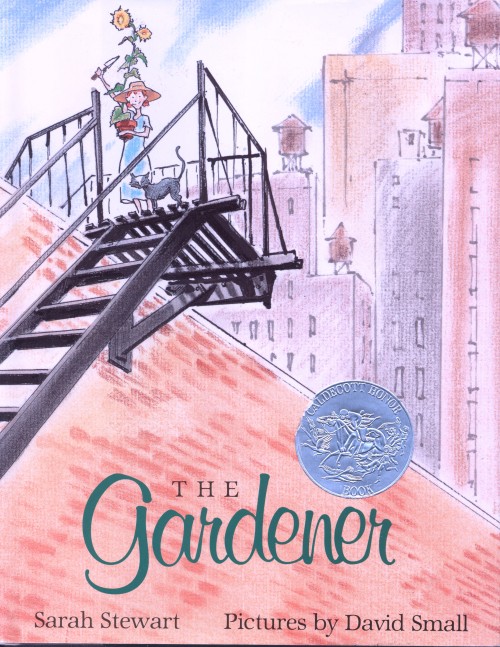
How excited were the two of you to win The Christopher Medal and receive a Caldecott Honor for that book in 1997?
Very excited and surprised as well. It was stunning for both of us, to have such a private, personal experience given such huge recognition by the larger world.
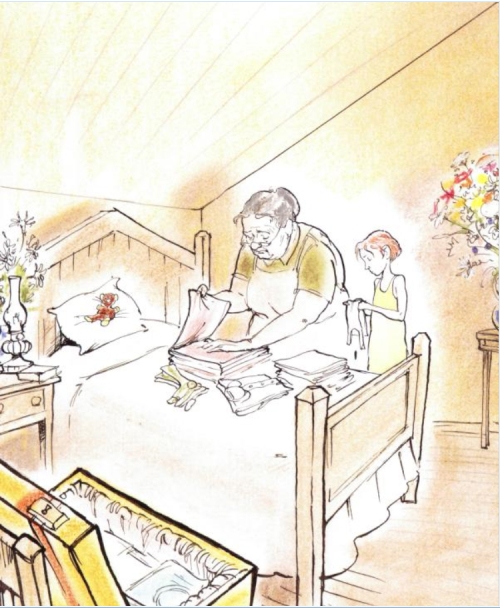
Did you see a jump in demand for your illustrating after those wins?
I suppose I did. I know I started getting offered a lot of manuscripts that resembled Sarah’s but that weren’t Sarah’s, so I really had no interest in doing them.
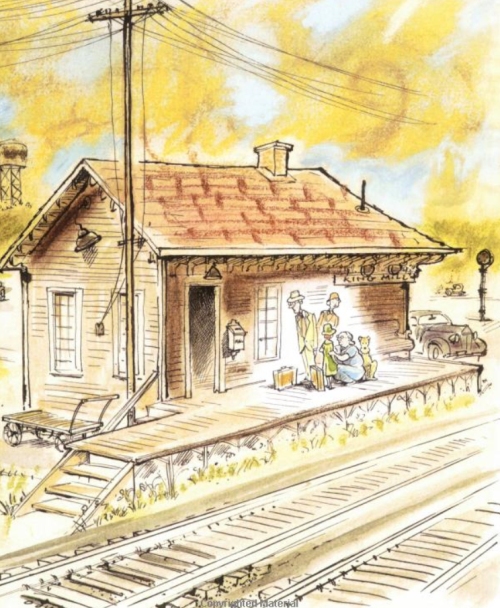
Did you have any idea that “So, You Want To Be President?” by Judith St. George would win the Caldecott?
I personally didn’t think that book would sell five copies. But, speaking of “fun?” … that book was fun to make! Maybe that’s why I had little hopes for it, because it seemed more like bad-boy misconduct than work.
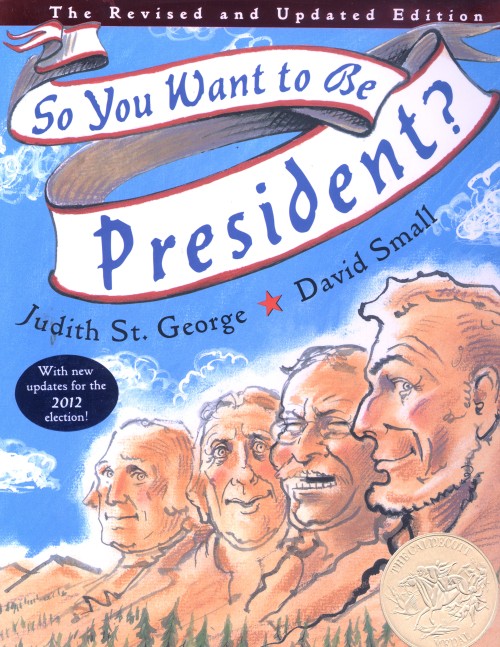
Once we realized that a Presidential election (Bush v. Gore) was coming up that very Fall, we stepped up the production schedule and I had to work very quickly; I didn’t have time to fuss and fret over every drawing. So, maybe my pessimissim about its prospects was related to my anxiety that maybe I hadn’t done a “perfect job”. (Aways a worry.)

Was Imogene’s Antlers the second picture book that you wrote? How did you find a home with a publisher for that book?
It was the fifth book I had illustrated, the second book I wrote. The editor of my first book– Alan Benjamin– had just become the Senior Buying Editor at Crown. Nobody among the higher-ups at Crown wanted to buy that book, but Alan made them publish it. He had a sense about it. He and I shared that bad-boy quality in our taste for books, but Alan was also very suave, very urbane, and could be very persuasive.
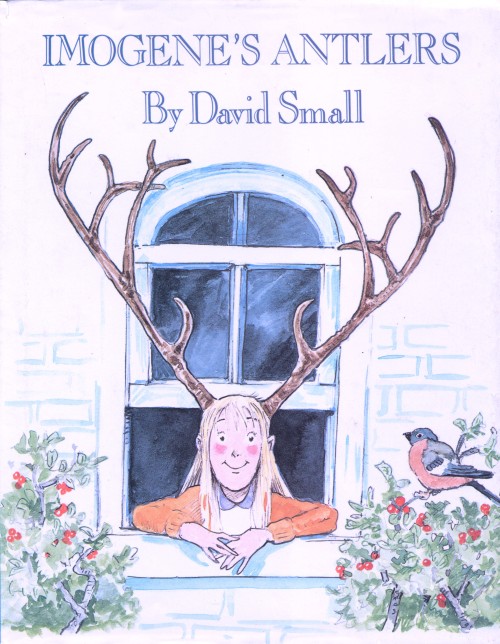
When did you meet your agent Holly McGhee?
It must have been 1997, the year she began Pippin Properties. I had given up on my search for a literary agent because all of the ones I met, for one reason or another, I had found disturbing. (One of them — a very famous kids book agent– was an outright crook. I had been warned away fromhim by several of my peers, but I interviewed him just to see if they were right. They were right. He met all red flag points on the official “How To Recognize a Sociopath” list. After that creepy encounter I had decided to go back to being agentless.
Then, Holly McGhee wrote to me. Her letter not only showed a genuine interest in– and enthusiasm for — my work, but she already had an impressive list of clients including William Steig and Jon Agee. When I met her face-to-face and found myself talking not to a self-inflated suit but to a genuine, straight-talking human being, I was convinced. I knew that she could help bring some business clarity to my life.
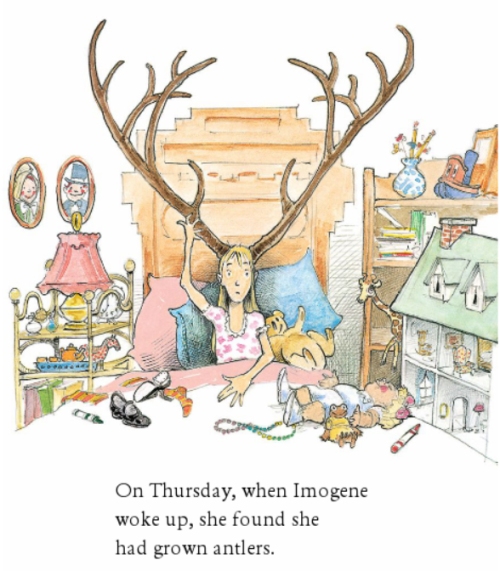
Were you Holly’s first client?
I was not the very first, but I was among them.
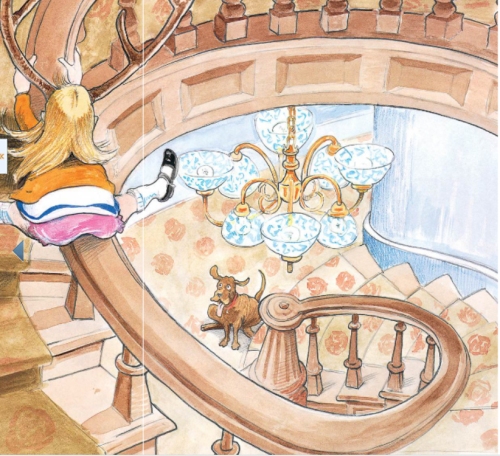
Was it hard to write “Stitches,” since it is so heartfelt?
It took me about 7 years to make that book, and yes, it was very very hard to make. But, that being said, I was driven to do it. All the false starts, all the re-do’s, the frustrations and self-doubts, the piles of material that ended up in the trash and the fifteen full-length versions (all of them different) were just things that seemed very necessary to working out a coherent story.
Holly, by the way, was very involved with Stitches from the beginning. She edited the first 12 versions of it. When we finally had it in a form she thought she could present with confidence, she spent a whole year of research to find a list of 6 editors at 6 different houses where she thought my book would fit. After that, she and the other Pips spent months putting together a presentation package. About that, Holly said, “I want this thing to be so extraordinary-looking that an editor will immediately
pop it into their briefcase and read it on the train ride home.” The day after she sent it out she immediately got 5 offers.
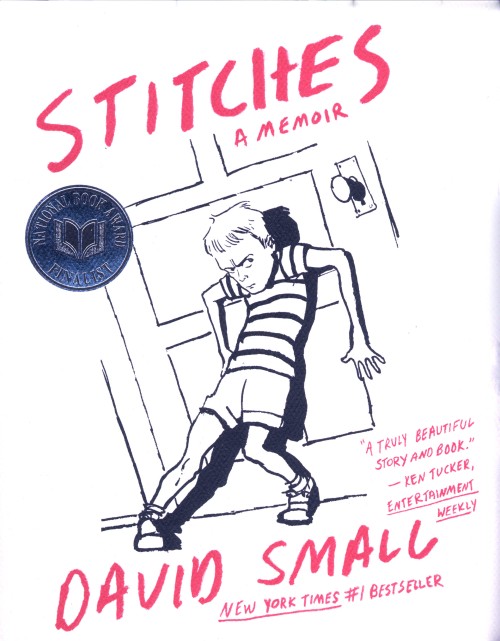
Was that your first graphic novel?
Yes.
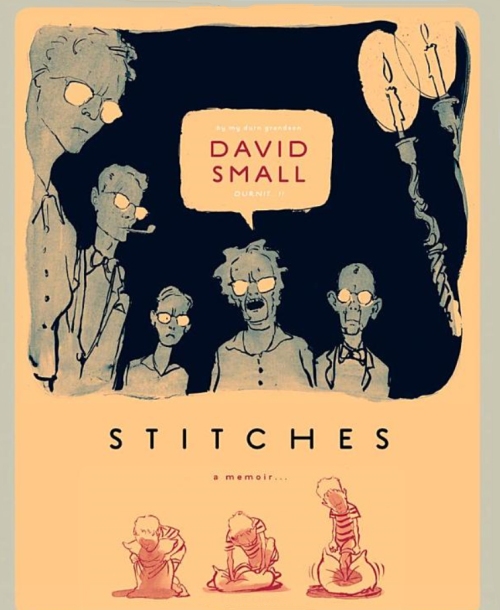
Which one of your books is your favorite?
Stitches is the book of my life, okay?–but it is in a much, much different category from the picture books. Of those, The Money Tree (by Sarah ) and my own Paper John were probably the most meaningful, because they both were pulled up from some place very deep in us both. As for the 50+ other picture books, I have to give the by-now cliched but still very-honest answer: I don’t play favorites with my children. That said, there are a few of those children who–although I wish them well– I’d prefer not to see again. You try the best you can every time, but sometimes the stars are misaligned …. something has gone wrong.
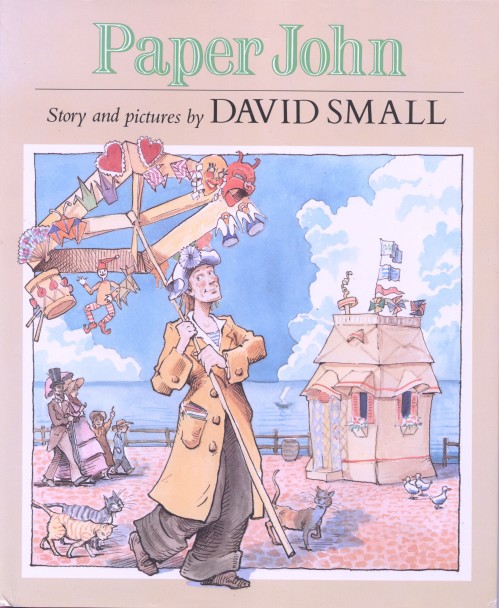
What is your favorite material to us when you do a colored illustration?
I first draw in waterproof ink, then do the color in water color and pastels.
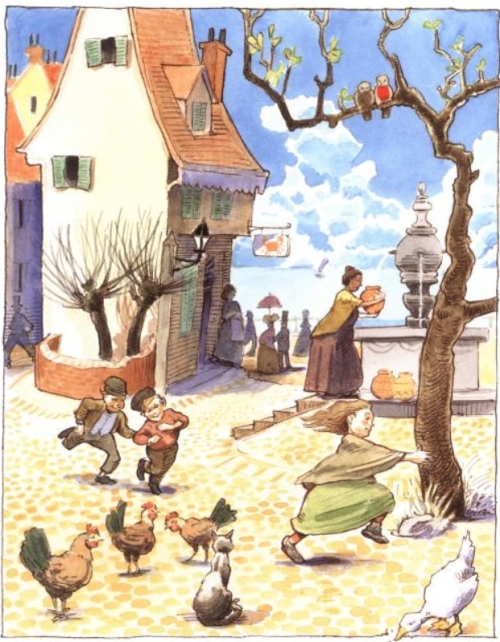
Have your materials changed since your first published book?
Yes. By the time I did So, You Want To Be President? I was getting tired of Realism and was ready for a change in both my style and materials. That was when I loosened up my drawing style, began drawing more with a brush, and working in some patches of pastel chalk, for more emphatic color.
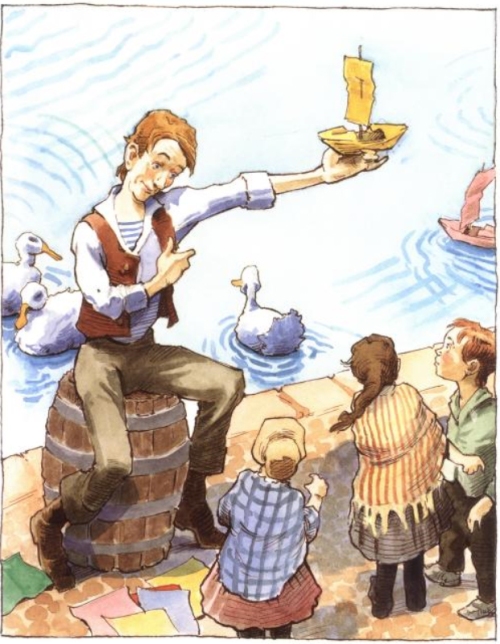
Have you tried your hand at Photoshop or drawing with a graphic tablet?
I have. Like everyone else in this ramped-up age of publishing, I was seduced by the “apparent” speed with which changes can be made with the computer, and by some of the impressive effects achieved by a few of the artists who use it. But, when I started taking Photoshop lessons I realized that I disliked more things about the medium than I liked. Most of all I missed the disconnect between the hand and the image. I missed having inky fingers and masses of art supplies surrounding me. I found out that being able to make speedy changes was not necessarily a good a thing for me: it felt strange that a drawing could be instantly evaporated into the ether, without having time to mellow and to reveal its good aspects. I should add that, when I go to an exhibit of original art I prefer to see original hand-made art, not a digital print-out. From the former I feel I’m always learning something useful about what the human hand is capable of doing, while from the latter I generally learn nothing. I also see a lot of computer artists trying clumsily to imitate the effects of
hand-drawn work. I’m not saying I’m against digitally-generated images, I’m only saying it’s not for me.
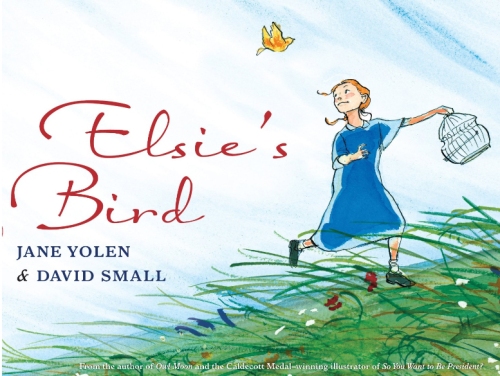
Do you spend any time promoting your work or does Holly take care of all that for you?
I spend Zero time in self-promotion. I’m not on Facebook or Twitter. Holly is my advocate, my procurer (heh) , my confessor, my confidante, occasionally (as with Stitches,) my first editor and one of my best friends. As Artistic Director of her own company now, she chooses the best artists and authors she can find, gets them the best contracts she can, and lets their work stand for itself.
Promotion is up to the publishers and their Marketing Departrments. What makes them get behind a book –or not– is always a mystery, but I have to trust them. In any case, I’d much rather have them out there, doing all that, than doing it myself. I have other fish to fry.
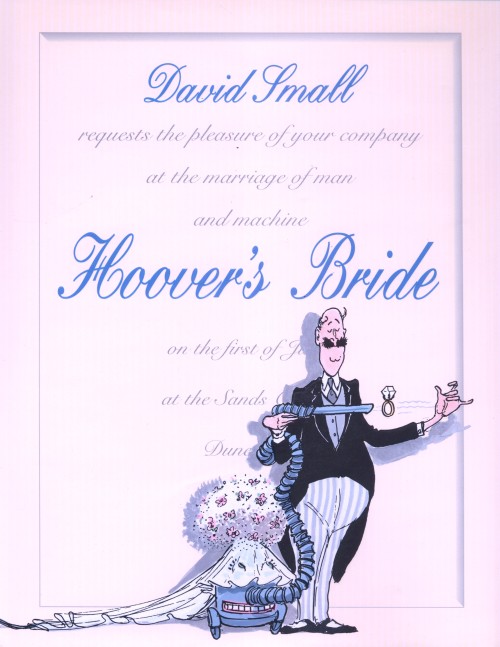
What do you feel was your greatest success?
You can have many different kinds of success. There are books that might have been commercially successful that were not, in your own opinion, so successful as works of art or literature. There are books you are very proud of from an aesthetic standpoint, which sink without a trace. There are books that have a big critical success but which, for some reason, the public doesn’t go for. I’ve had all of these.
The 2001 Caldecott Medal ceremony was the most astonishing public display of success I’ve ever experienced. I think almost everyone present, that night in San Francisco, felt that something really significant had been done by the ALA. The crowd was immense and the air was electric. There was something very daring and spirited about the committee’s choice that year. I am sure it had something to
do with the political miasma swirling in D.C. at the time, and with the sense that Judy St. George, our editor Patricia Gauch and I had delivered some straight-talk to American children about the real human beings–full of real talents and real faults — who have held the highest office in the land. So, it was an enormous thrill being at the center of all that , but what I felt mainly was a fearsome lack of words with
which to express adequate thanks to the givers.
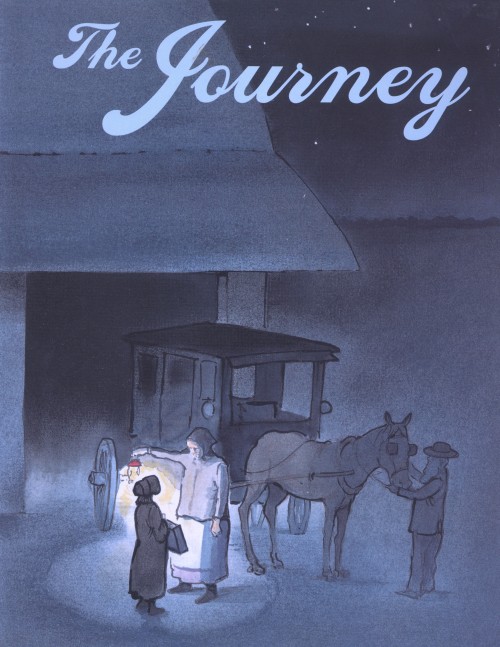
Since you have a separate studio, would you tell us a little bit about it?
We have two houses on our property. One is the house we live in, the other–a 3-minute walk along the riverbank– is my studio, which occasionally doubles as a guest house. When I used to work at home Sarah and I found the intertwining of our lives too distracting. Sarah needs absolute silence, while I need music on, sometimes very loud, when I work. Sarah likes to leave the phone off the hook, but I don’t
mind interruptions. I enjoy emails, while Sarah has never touched a computer and won’t have one in the house. Those are significant differences, but we both share a need for privacy, so having separate work spaces –when we finally got them–was a big relief. That being said, I have to tell you that Sarah never once complained while I was at work at home, but, when the opportunity came along for me to have a studio, she was on it like spots on dice.
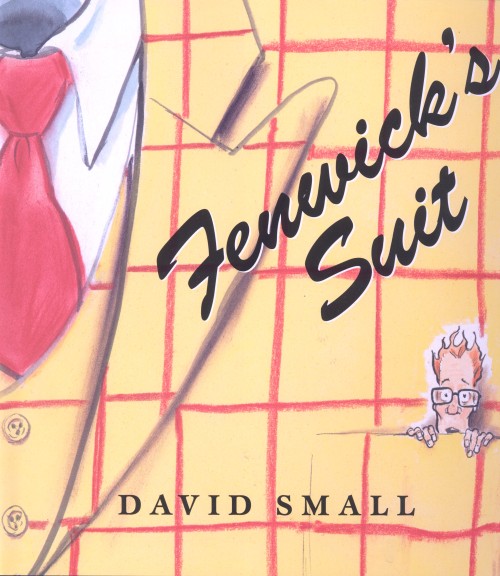
Do you try to spend a specific amount of time working on your craft?
No. I don’t have a stopwatch for the amount of time I put into my work , just as I don’t go over my Profit & Loss sheets. I pay no attention to time and I pay even less to money. If I paid attention to those things, my worries would be all about time and money. As it is, my worries are all about art.
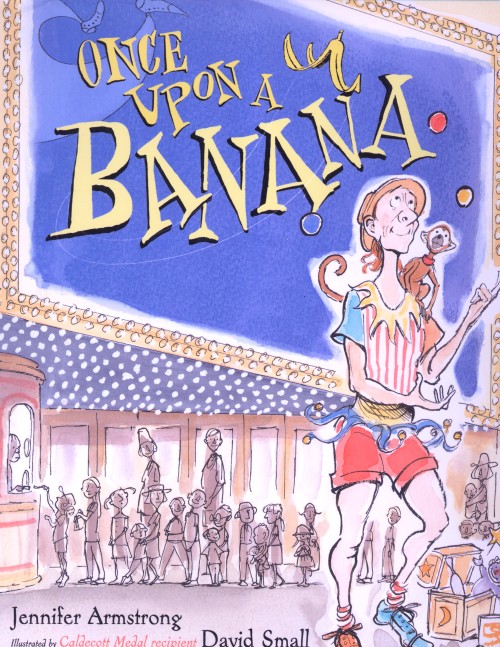
Do you take pictures or do any types of research, before you start a project?
For things like architectural styles and period costumes one must have research tools, books and the Internet. Computers are amazing tools for this, but I cherish equally my collection of books, which is big. A book is a often a better research tool, especially when you don’t know specifically what you’re looking for, you often find it by leafing through the pages.
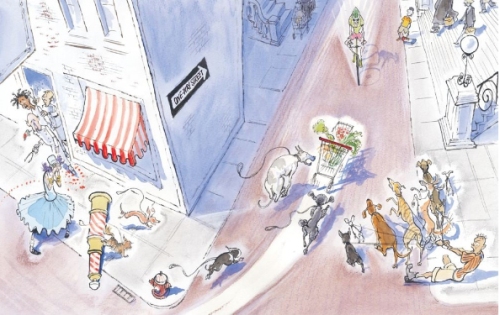
Do you think the Internet has opened doors for you?
Oh yes! I live on a prairie outside a small farming village, Population 800. There is a distinct lack of culture out here. We have a very small library, but nothing else, no museums, no theatres. Even though Chicago and Detroit are only 3 hours distant, we visit them only occasionally and for very brief stays. With e-mail I communicate daily with business friends, editors and art directors in NYC and with close friends in
Boston, San Francisco, Mexico, Paris and Brazil. It’s fantastic.

Do you have any career dreams that you want to fulfill?
I hope to keep working and to fall over into my ink bottle when I croak. If there is an afterlife I hope they have a good art supply store there.
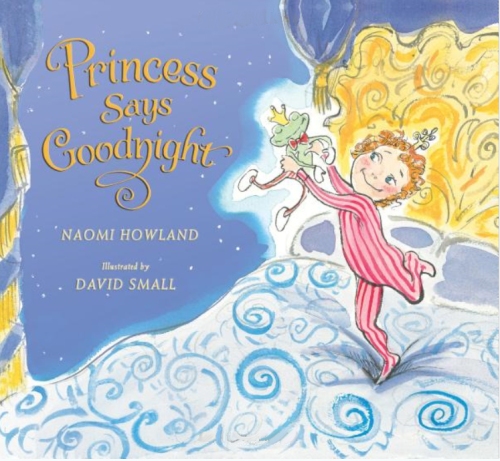
What are you working on now?
I have a book coming out with Dial this September, CATCH THAT COOKIE! written by Hallie Durand. Next year will see GLAMOURPUSS by Sarah Weeks (Scholastic, Spring 2015.) At the moment I’m working on finals for BLOOM by Doreen Cronin (Atheneaum, Spring 2016.) I also have a graphic novel in the works. That will be published by Liveright.
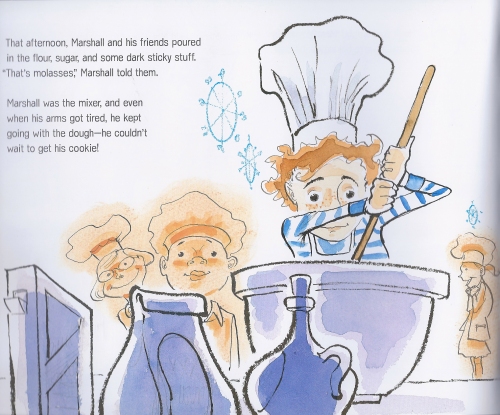
Do you have any material type tips you can share with us? Example: Paint or paper that you love – the best place to buy – a new product that you’ve tried – A how to tip, etc.
A few years ago I fell in love with a refillable brush pen made in Japan and distributed by Pentel. I buy mine from Wetpaint in St. Paul MN. (On their website store, click on Brush Pens and it will be the first item listed.) I drew most of Stitches with that pen, and I always travel with them to use in my sketchbooks.
As for”How To” tips, I have two good ones:
A. Always carry a sketchbook with you and use it. If you’re self-conscious about people watching you, wear tinted glasses and develop a “don’t mess with me” look. (You are, after all, at work, and you have to focus at all costs.)
B. If you’re learning watercolor, try to put down no more than three layers of color, the first having so little paint in it that you can hardly detect any color. This advice comes from good old John Ruskin’s “Elements of Drawing” (1857.) When I can calm my own impatient impulses and follow it, a painting usually works out beautifully. When I forget Ruskin’s tip, my painting gets muddy and has to be done again.
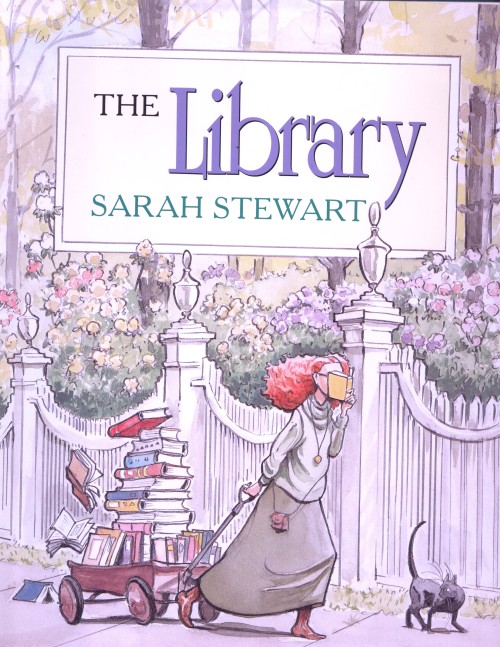
Any words of wisdom you have on how to become a successful illustrator would be appreciated?
Sure. Don’t think about being a successful illustrator. Just try being a great one. Copy the old Masters.
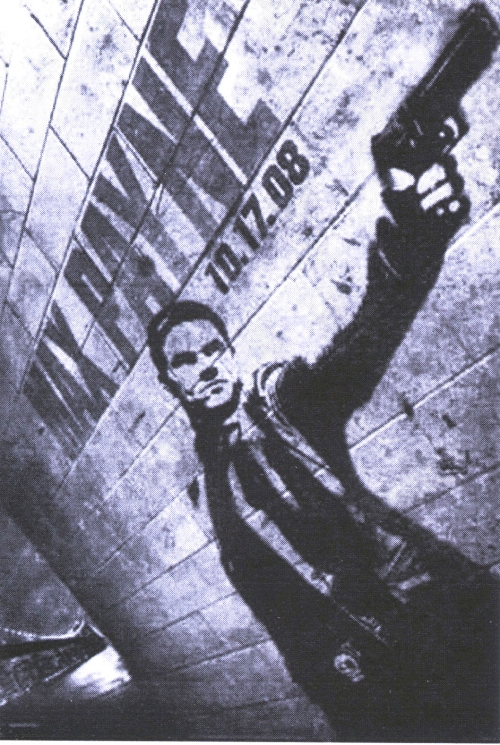
Thank you David for sharing your journey, expertise, and process with us. Good luck with CATCH THE COOKIE. I hope it is a big success.
Here is the Amazon link for anyone who wants to check it out: CATCH THAT COOKIE by Hallie Durand. Can anyone tell me who is Hallie Durand?
You can visit David at his website: http://www.davidsmallbooks.com
Please take a minute to leave David a comment. I am sure he would love to hear from you and as always, I would, too.
Talk tomorrow,
Kathy
Filed under:
Advice,
Illustrator's Saturday,
inspiration,
Interview,
Process,
Tips Tagged:
Caldecott Medal,
Catch the Cookie,
David Small,
Sarah Stewart,
Yale Graduate School of Art 















 I noticed that illustrator David Small’s new book, Catch That Cookie was hitting the bookshelves on August 14th, so I contacted him to see if he would like to be featured on Illustrator Saturday. He will be doing a book tour in September, so I’ll make sure I tell you all the ins and outs as soon as I know them. It will be a great opportunity to meet him and Hallie Durand, if they are coming to a bookstore near you.
I noticed that illustrator David Small’s new book, Catch That Cookie was hitting the bookshelves on August 14th, so I contacted him to see if he would like to be featured on Illustrator Saturday. He will be doing a book tour in September, so I’ll make sure I tell you all the ins and outs as soon as I know them. It will be a great opportunity to meet him and Hallie Durand, if they are coming to a bookstore near you.















































Great interview. Isn’t it fun to realize that even something as innocent as baking cookies can lead to inspiration!
Thanks for sharing your journey with Catch That Cookie, I’m looking forward to the story and pictures!
Great post and advice. Loved reading about your inspirations and journey.
So glad Holly mentioned Robert McCloskey and his books – an idol of mine! Great tips!
Excellent interview and tips! I love Gingerbread Man stories, as I used to teach kindergarten and did a Gman unit!
Kathy’s questions are the best and she doesn’t allow shortcuts, just one reason they have such depth. I’m glad everybody enjoyed this, and thank you for reading, it was fun to do.
What a GREAT interview, ladies! :D I’ve read all of “Hallie’s” books and love them, so I expect to love CATCH THAT COOKIE just as much, especially being illustrated by David Small! :) And, of course, I love the work you, as an agent, help put out into the world. Obviously, it all speaks for itself :D Great pics, too, Holly :)
Thanks for this. SO enjoyable :)
Love your words writersideup!!
hehehe…so glad :) (Just so you know, Holly, it’s me, Donna T. :) )